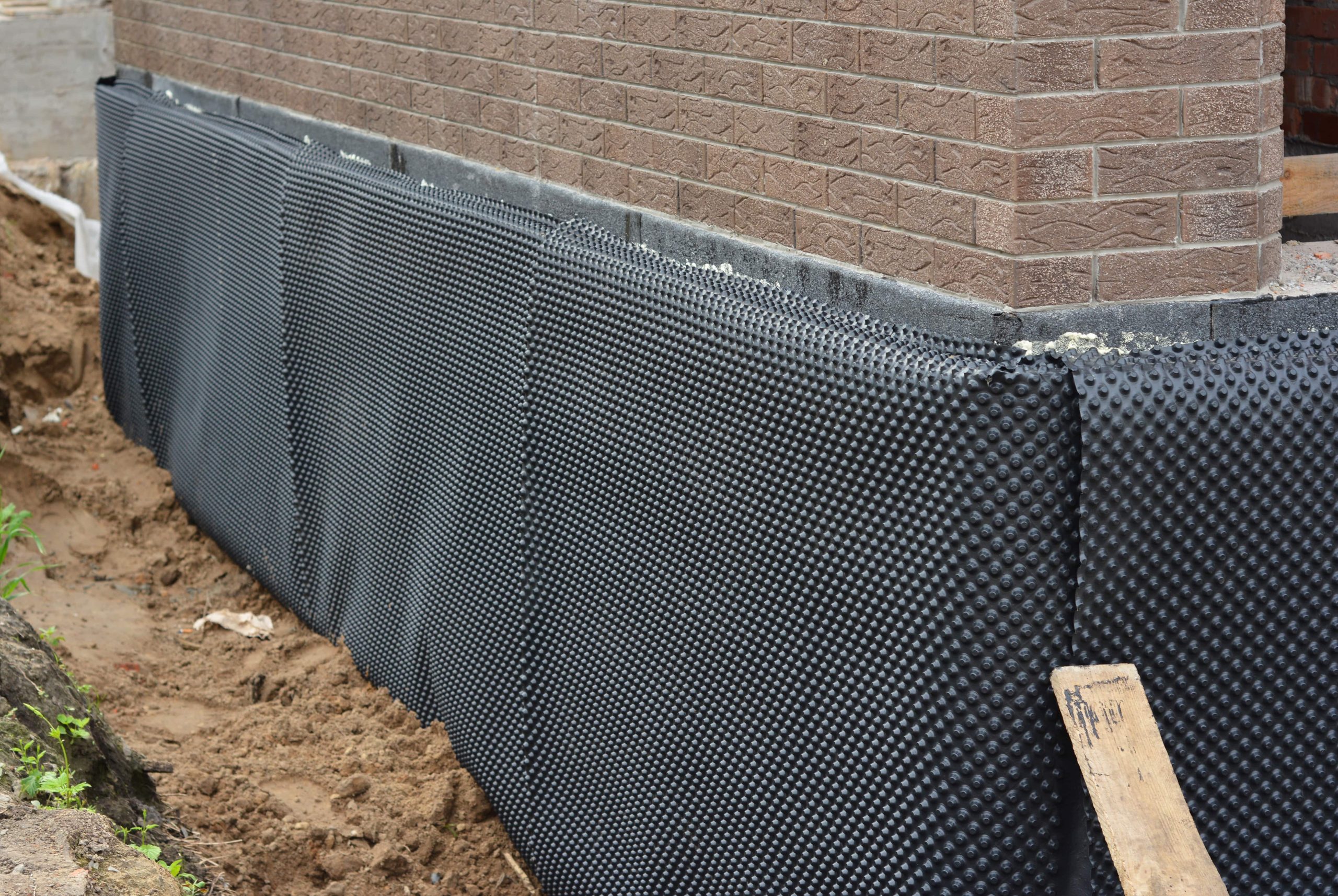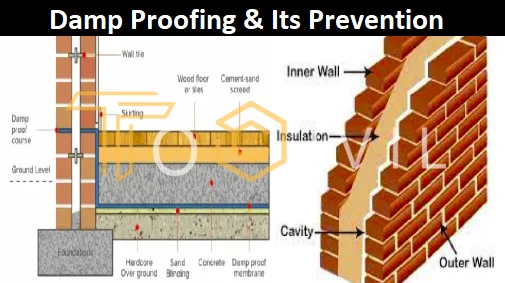Key differences rising vs. penetrating damp explained by a damp specialist newcastle
Key differences rising vs. penetrating damp explained by a damp specialist newcastle
Blog Article
Checking Out the Various Techniques and Solutions for Effective Damp Proofing
Dampness in buildings postures substantial challenges to both architectural honesty and indoor air high quality. Different methods and services have actually emerged to combat this prevalent problem. From conventional damp-proof membrane layers to innovative chemical treatments, each method supplies unique advantages. Understanding these options is vital for effective moisture control. However, selecting the ideal solution relies on details structure conditions and needs, triggering further exploration into the most reliable moist proofing strategies readily available.
Understanding the Causes of Dampness
Although moisture can occur from various resources, comprehending these reasons is vital for effective removal. Generally, moisture stems from three primary resources: rising wet, penetrating moist, and condensation. Climbing wet happens when groundwater takes a trip up-wards with permeable materials, such as block or rock, usually as a result of an absence of an efficient obstacle (damp removal newcastle). Permeating damp is generally created by external variables, consisting of roof leaks, defective gutters, or damaged walls, allowing water to penetrate a residential property. Condensation, on the other hand, arises from excess moisture in the air, commonly exacerbated by inadequate air flow and temperature distinctions, causing water beads forming on surfaces. Determining these underlying concerns is crucial, as each type of dampness needs a customized approach for removal. Appropriate assessment helps in determining one of the most effective options, eventually securing the architectural honesty of a building and boosting indoor air high quality
Traditional Damp-Proof Membrane Layers

Chemical Damp-Proofing Solutions
Chemical damp-proofing solutions provide a cutting-edge method to protecting against moisture intrusion in structures. These techniques generally include the application of liquid chemicals that pass through masonry and develop an obstacle against rising wet. Generally made use of chemicals consist of silanes, siloxanes, and various other water-repellent representatives that react with surface materials to create a hydrophobic layer.The application procedure generally calls for exploration holes right into the walls, infusing the chemical solution, and allowing it to treat. This method is specifically helpful for older structures where conventional damp-proof membranes might be unwise. Moreover, chemical damp-proofing can be less disruptive and more cost-efficient than comprehensive renovation projects.While effective, these solutions depend upon appropriate application and ecological conditions for peak performance. Regular upkeep and surveillance are important to guarantee the longevity of the damp-proofing treatment. Generally, chemical damp-proofing stands for a flexible option for securing buildings against moisture-related damage
Cavity Wall Construction Methods
Cavity wall building and construction strategies offer various advantages, particularly in wetness control and power efficiency. By including an air space in between two layers of masonry, these wall surfaces effectively mitigate water access while enhancing insulation. This combination not just safeguards frameworks from dampness yet additionally adds to decreased energy usage.
Advantages of Tooth Cavity Wall Surfaces
When considering effective moist proofing methods, the advantages of tooth cavity walls stick out plainly. Dental caries walls include two different layers, developing an air space that efficiently minimizes dampness penetration. This design decreases the risk of wetness, as the outer wall acts as an obstacle against rain and water ingress. In addition, dental caries wall surfaces boost thermal insulation, which contributes to power efficiency by decreasing warmth loss. They likewise offer sound insulation, assisting to develop a quieter indoor atmosphere. Furthermore, the air void enables air flow, which helps in moisture control and reduces the probability of mold and mildew development. These advantages not just enhance the overall convenience of a building however likewise add to its longevity and structural honesty.
Wetness Control Techniques
Reliable moisture control methods are essential in dental caries wall construction to ensure lasting security against moisture. One key method entails the incorporation of weep holes, which promote water drain from the tooth cavity, avoiding accumulation. Additionally, using breathable membranes can aid manage dampness degrees while permitting entraped vapor to escape. Appropriate placement of insulation is also vital, as it needs to not block drainage paths. Making certain that the outer fallen leaves of the dental caries wall surface are constructed with water-resistant products improves overall sturdiness. Normal maintenance checks are necessary to identify any kind of obstructions or damage early, securing the framework's honesty. Ultimately, a mix of these techniques forms a robust protection against moisture breach in cavity walls.
Insulation and Power Performance
Insulation plays an essential function in improving energy performance within cavity wall building and construction. By incorporating shielding materials, these walls produce a thermal barrier that decreases warmth loss and minimizes power consumption. Effective insulation not just assists preserve a stable interior temperature level but also mitigates the danger of wetness, as it stops condensation within the wall dental caries. Numerous methods, such as the usage of inflexible foam boards or mineral woollen, can be utilized to attain perfect insulation efficiency. Furthermore, correct installment is vital to ensure that gaps and gaps are reduced, which can or else compromise power effectiveness. Eventually, a well-insulated tooth cavity wall surface adds substantially to general sustainability and reduces cooling and heating costs for property owners.
Outside Damp Proofing Methods
External damp proofing techniques are essential for securing frameworks from wetness seepage. Two effective strategies include the application of waterproof membranes and the installment of French drains pipes. These solutions aid reduce water accumulation and protect the honesty of buildings.
Waterproof Membrane Application
While various methods exist for stopping dampness access, the application of waterproof membrane layers stays an extremely reliable exterior moist proofing method. These membranes are usually made from products such as polyethylene, rubber, or modified bitumen, giving a robust barrier against water infiltration. The installment process includes applying the membrane layer to the exterior surface areas of walls or structures, ensuring total insurance coverage to stop leakages. Proper adhesion and securing at joints are critical to taking full advantage of performance. Waterproof membranes can be applied in various types, consisting of liquid finishings and sheet membrane layers, enabling adaptability based upon the particular demands of the structure. This technique not only secures buildings from wetness but additionally boosts their long life and architectural integrity.
French Drain Setup
One efficient method for taking care of groundwater and protecting against dampness accumulation around a structure's structure is the installment of a French drainpipe. This water drainage system is composed of a trench loaded with crushed rock and a perforated pipe that redirects surface water away from the structure. Proper installment needs cautious planning, guaranteeing that the drainpipe inclines far from the structure to promote excellent water flow. Furthermore, the place of the drain is important; it needs to be placed in areas susceptible to merging or excess moisture. Regular maintenance, consisting of clearing up debris from the gravel and making certain the pipe remains unobstructed, is essential for long-term performance. Ultimately, a well-installed French drainpipe can substantially decrease the threat of water-related problems in cellars and structures.
Interior Waterproofing Methods
Inside waterproofing techniques are vital for securing a structure's inside from dampness infiltration and possible water damages. These strategies usually involve the application of specific materials and strategies designed to create a wetness obstacle within the framework. One common strategy is using water resistant finishes or sealants on wall surfaces and floorings, which avoid dampness from permeating surfaces.Additionally, mounting interior water drainage systems, such as sump pumps, can successfully handle water accumulation in basements and creep spaces. One more approach includes using vapor barriers, which are set up to hinder moisture motion from the ground right into living spaces.Moreover, dealing with any splits or spaces in wall surfaces or foundations with proper sealers guarantees a comprehensive defense versus water invasion. By applying these indoor waterproofing strategies, homeowner can greatly decrease the danger of mold development, structural damages, and various other moisture-related issues. Appropriate execution of these methods is essential for long-term protection and building honesty.
Regular Maintenance and Examination Practices
Regular maintenance and evaluation methods are important for guaranteeing the long-term performance of damp proofing services in any kind of structure. Routine checks enable homeowner to recognize early indications of moisture breach, such as read more peeling paint, mold and mildew development, and musty smells. These signs can signify underlying concerns that call for prompt attention.Inspections should be performed a minimum of yearly, concentrating on susceptible areas like cellars, creep spaces, and exterior walls. During these evaluations, homeowner ought to examine sealers, drain systems, and air flow to validate they operate correctly.Additionally, preserving seamless gutters and downspouts is crucial, as blocked systems can cause water buildup near the structure. Carrying out a regular maintenance schedule, together with timely repairs, can considerably prolong the life expectancy of damp proofing measures and shield the structural integrity of the building. Positive actions ultimately add to the overall health and wellness and security of the living setting.
Regularly Asked Inquiries
How Much Time Does Damp Proofing Usually Last?
The period of moist proofing efficiency varies, normally lasting between 20 to 50 years. Aspects such as application quality, ecological problems, and upkeep techniques considerably affect the durability of the moist proofing treatment.

Can I Damp Proof My Home Myself?
The individual contemplated the feasibility of do it yourself damp proofing. With proper research and the appropriate products, it is feasible. Nonetheless, they additionally identified the significance of professional assistance to ensure resilient efficiency and avoid future issues.
What Are the Indicators of Inadequate Damp Proofing?
Indications of ineffective moist proofing include relentless stuffy odors, visible mold and mildew growth, peeling off paint, moist patches on wall surfaces, and wood decay - damp proofing newcastle. Home owners must deal with these concerns without delay to stop further damages and health problems
Does Damp Proofing Affect Indoor Air High Quality?

Exactly How Much Does Professional Damp Proofing Expense?
Professional moist proofing prices vary significantly, generally varying from $1,000 to $5,000 relying on the residential property's dimension, the extent of the moist concern, and chosen approaches. Each situation needs a customized assessment for accurate prices. Generally, dampness originates from three main resources: climbing damp, permeating wet, and condensation. When taking into consideration efficient damp proofing techniques, the benefits of cavity walls stand out plainly. Outside damp proofing techniques are crucial for safeguarding structures from wetness infiltration. While various approaches exist for protecting against dampness ingress, the application of water-proof membrane layers continues to be a highly effective external moist proofing method. Indicators of inadequate moist proofing include persistent moldy odors, visible mold growth, peeling off paint, wet spots on wall surfaces, and wood decay.
Report this page